
Fig & Lentil Salad from Virtually Vegan
Summer and salad go hand-in-hand and this offering from Heather Whinney’s Virtually Vegan is a fresh, sweet, figgy take on a summertime staple. Complete with a harissa
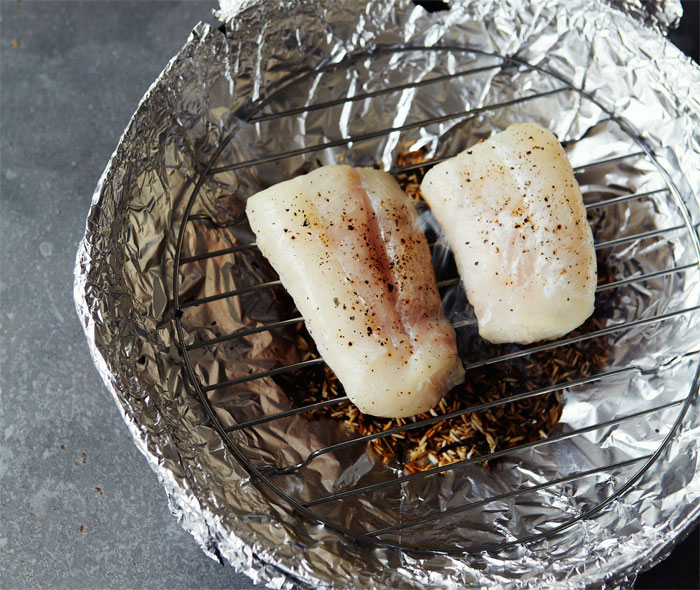
Michelin-starred chef Daniel Galmiche shares his tips for smoking food at home from his new recipe book Revolutionary French Cooking
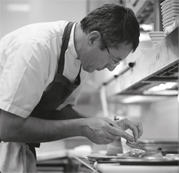 I am a big fan of smoked foods, particularly meat, as I just love those smoky flavours, and although smoking was developed as a way of preserving food, I think it is more about the wonderful flavours it creates. Originally – going back to ancient times – people used to hang their kill to dry in their caves. Since there was no way out for the smoke from the fire, they noticed that both the flavour and the preserving qualities were improved by the smoke … and so it began!
I am a big fan of smoked foods, particularly meat, as I just love those smoky flavours, and although smoking was developed as a way of preserving food, I think it is more about the wonderful flavours it creates. Originally – going back to ancient times – people used to hang their kill to dry in their caves. Since there was no way out for the smoke from the fire, they noticed that both the flavour and the preserving qualities were improved by the smoke … and so it began!
Since then, smoking foods, usually over wood smoke, has become popular in many regions of the world and has developed commercially. In particular, smokehouses were built on farms to preserve meat – well away from the farm buildings to avoid fire spreading if an accident happened – and on the coast, to be handy for the fishermen landing their catch.
Where I come from in Franche-Comté, smoking foods has always been a speciality and the technique is still very much alive today. On market day, I often used to go shopping with my mum or my sister, Dolores. They were both really good cooks – although that goes without saying in my family as we are all enthusiastic gourmands. Anyway, you will see in my new book Revolutionary French Cooking, I like to use products from my home area and one of those is Morteau, a rather delicious smoked sausage. We often bought this from the market, along with smoked pork shoulder, bacon or neck. To serve with it, Mum used to make a lovely sauerkraut with turnip instead of cabbage – that day was one we looked forward to.
At The Vineyard
At my restaurant The Vineyard, we serve some smoked dishes in my restaurant. My friend, John, has supplied our smoked salmon, haddock and mackerel for the last 20 years and, trust me, he is very good at it! I also love to use some smoked ingredients, like smoked paprika and, of course, Morteau sausage. But we also do some smoking ourselves; my particular favourites are smoked beetroot, which has a wonderful earthy flavour, to serve as a side dish or as part of a salad, and smoked duck, a meat that seems perfect to prepare in this way.
Best Foods for Smoking
All kinds of poultry and meat can be smoked, creating a range of products from spiced pastrami to smoked bacon. Smoked fish ranges from cod or haddock to salmon, herring or mackerel. Tofu and cheeses absorb fabulous flavours in the smoker, as do nuts, vegetables like peppers and beetroot, and fruit such as prunes, which are often smoked while drying. Then there are smoked teas, like lapsang souchong, and even whisky. It is important to remember, though, that there are various methods of smoking and not all act as a preservative.
Hot and Cold Smoking
Whatever their size, smokers create heat and smoke by burning wood chips or sawdust, or they may have gas burners. In the UK, oak or alder are the woods of choice in most smokehouses, as well as beech and fruit-tree woods, such as apple. In the US, corncobs are popular, while in New Zealand, they like to burn the wood from the manuka tree. Some smokers also have steam coils to create humidity and maintain the correct temperature, which is obviously crucial or the results will be dry and flavourless.
Hot smoking uses both smoke and heat in a wood-fired oven, a smoke-roaster or even a barbecue. The temperature reaches 52–80°C/125–176°F so, at the higher temperatures, the food is cooked as well as absorbing the smoky flavours.
Cold smoking does not cook the food as the temperature of 20–30°C/62–68°F only imparts the wood-smoke flavour, so many cold-smoked foods are cured in brine first. For our smoked recipes, I’m using a method based on a Chinese technique known as tea smoking, as a combination of rice, tea and sugar is used to create the smoke. We’ll then cook our smoke-flavoured foods afterwards. (I decided that the Icelandic tradition of smoking fish over dried sheep’s dung was perhaps not one to try at home!)
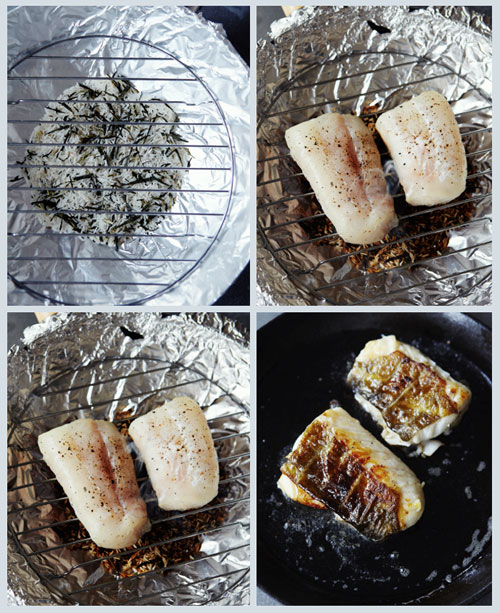
I hope you will try this method. You can buy smokers in pre-packed sets and there is a vast range of different wood chips available online for you to try. However, I would recommend you use my tea-smoking option first as you can simply adapt your steamer or wok.
Just one reminder. Do be careful of the heat and smoke, especially when disposing of the smoking ingredients as they’ll stay hot for a while even after you take them off the heat.
1. You need a steamer with a lid, or a wok with a lid and a metal rack, and some kitchen foil.
2. Your smoking mixture is 100g/3½oz/½ cup basmati rice, 2 tablespoons of green tea and 2 teaspoons of caster sugar.
3. Prepare the food as if you were going to cook it, so trimmed, stoned, left whole or sliced.
4. Put a large piece of kitchen foil, shiny-side down, in the bottom of a steamer or wok. Put the rice, tea and sugar on the foil, cover with a steamer insert or wire rack, then put on the lid. Put over a medium heat for about 5 minutes until the mixture starts smoking.
5. Quickly lift the lid and put the food onto the rack. Put the lid back on, turn the heat down to low and smoke for the time recommended in the recipe; that’s about 5 minutes for chicken or duck pieces.
6. Lift out the food and put on a plate to rest.
7. Wrap the smoking ingredients in the foil and discard them carefully.
Leave the food to cool, or continue to cook, following the recipe instructions, then savour those stunning flavours. Try smoking a cod fillet following the method below, or try the Smoked Duck and Lentils with Lavender or Smoked Chicken, Courgette, Garlic and Rosemary Casserole recipes in my book Revolutionary French Cooking.
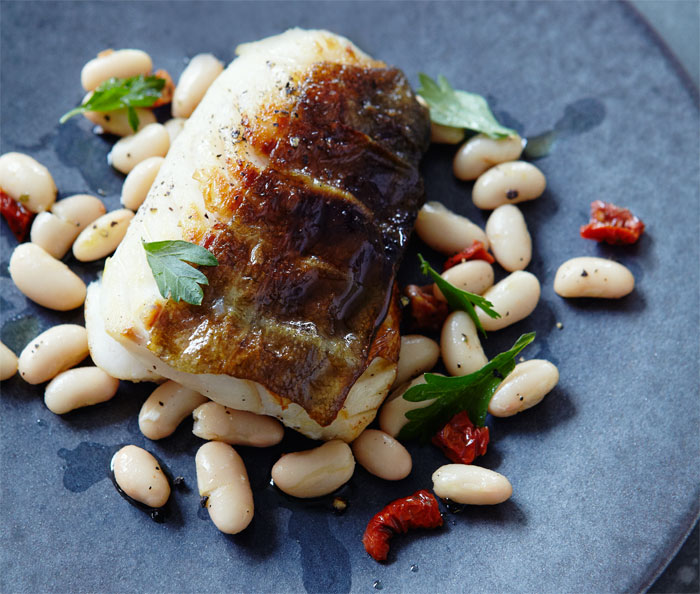
When you smoke fish with herbs such as fennel, the subtle scent permeates the fish to complement the lovely smoky flavour. Try this simple cod recipe.
Add a pinch of dried fennel to the smoking mixture (above) in the foil-lined wok, then put in the smoker 2 very fresh pieces of cod, skin-side down, season with salt and pepper, cover and smoke for 5 minutes. Remove them from the smoker and brush the skin with a little olive oil. Heat a frying pan over a medium heat and pan-fry the cod, skin-side down, for about 5 minutes until the skin is wonderfully crisp and golden. Flip it on the other side and cook for
2 minutes to finish it off. Cool and discard the smoking ingredients.
The perfect partner would be a warm white bean salad. Gently warm 300g/10½oz cooked white beans in a pan with 1 or 2 diced oven-dried tomatoes and a chopped garlic clove. Take off the heat and stir in 2 teaspoons of chopped parsley leaves, drizzle with a little extra virgin olive oil and top with your smoked cod fillet to serve. You are in paradise! Can I join you for dinner?
Continue to master contemporary French cuisine with Daniel Galmiche’s Sous-vide Masterclass, and show off some cheffy skills to your friends and family!
£19.99
Order now with free UK postage

Summer and salad go hand-in-hand and this offering from Heather Whinney’s Virtually Vegan is a fresh, sweet, figgy take on a summertime staple. Complete with a harissa
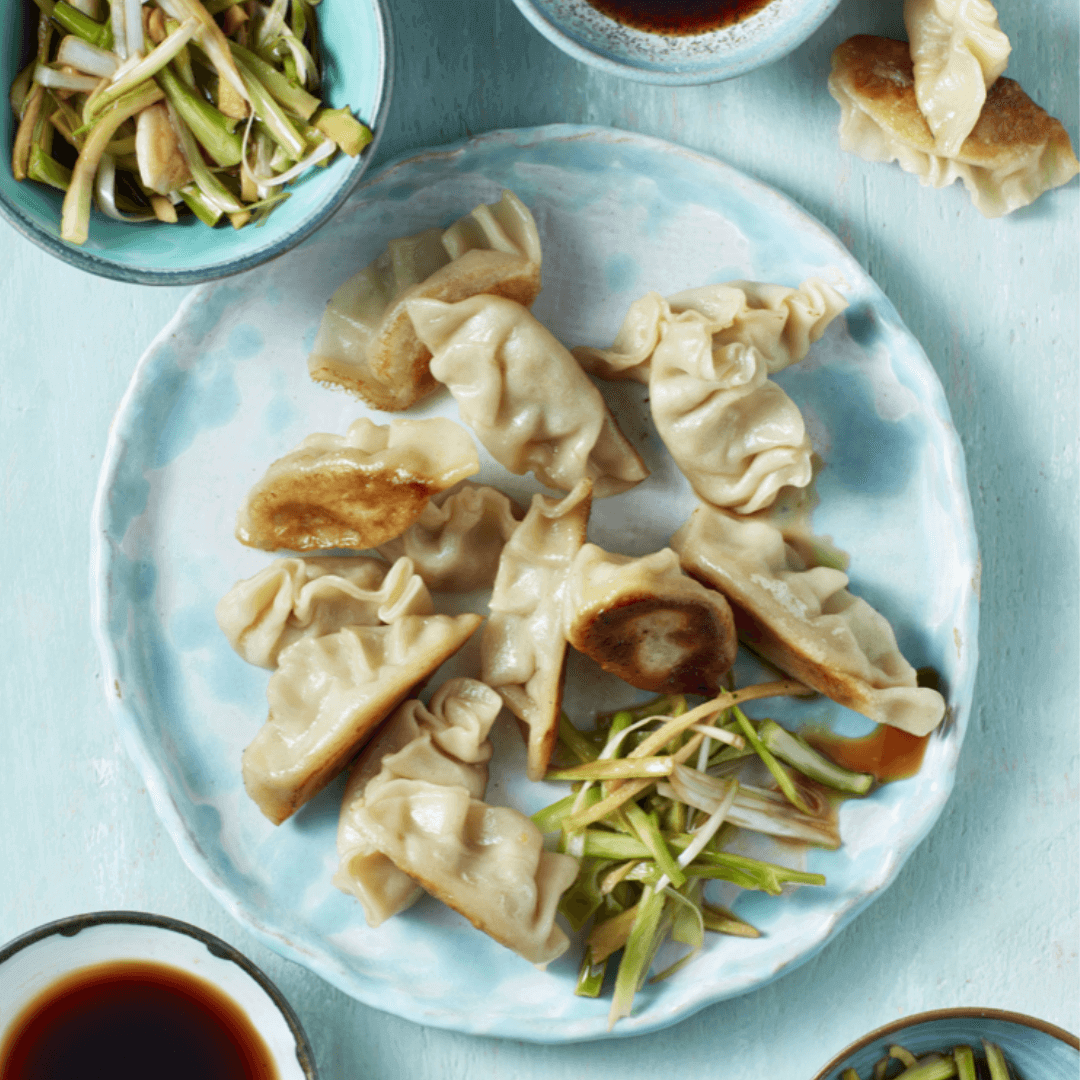
Too Good to Waste by Victoria Glass is THE guide to getting the very most out of your food, in the most delicious way possible! So much

Today we’re sharing a much coveted Real Bread: Slow Dough recipe – Cinnamon and Hazelnut Knots! These sweet knots are beloved all over Scandinavia, whip
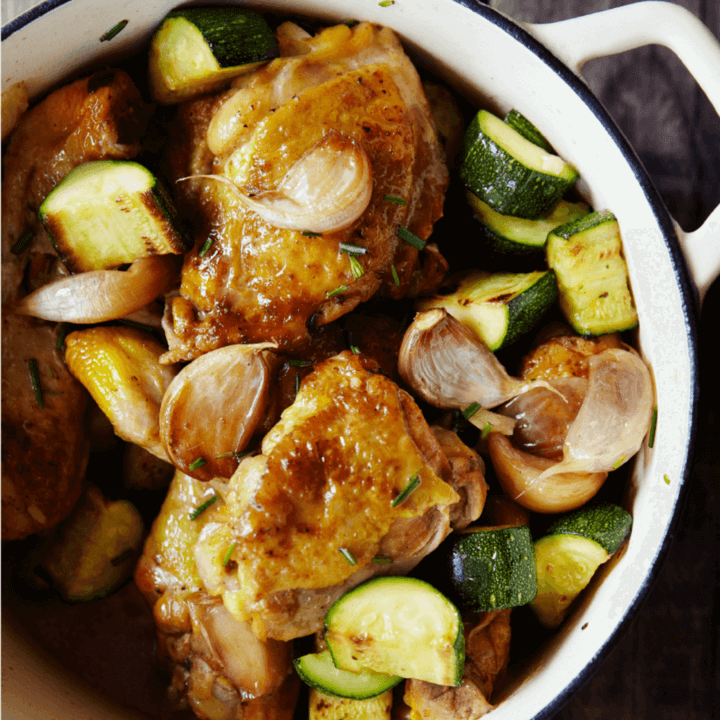
We’re gearing up for the publication of French Countryside Cooking by Daniel Galmiche, coming your way on May 14th (pre-order your copy right here)! To celebrate, we’re sharing

Watkins Media Limited
Shepperton House unit 11
89 Shepperton Road
London, England
N1 3DF

Watkins Media Limited
Shepperton House unit 11
89 Shepperton Road
London, England
N1 3DF